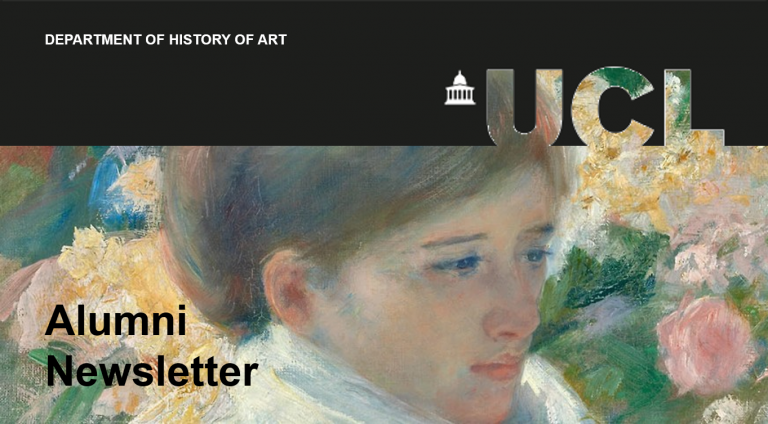
Newsletter Contents
Welcome
Department News
- MSc in Conservation of Contemporary Art and Media: Year One
- Interview with the History of Art Society President 2023-24
- LGBT+ History Month: Teaching Queer and LGBT+ History in Schools
- Leverhulme Success
- My Journey as an Art Historian – Dr Cadence Kinsey
Alumni Spotlights
Stay in Touch
Welcome from our Head of Department
Bob Mills
Professor of Medieval Studies
Head of History of Art Department
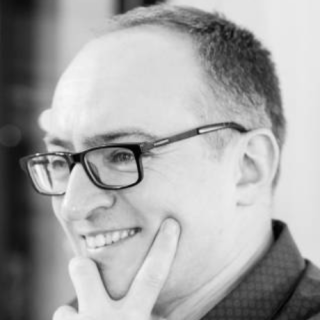
I am delighted to share this winter edition of our newsletter with you. As well as containing our usual roundup of news from our alumni community, it includes an update about our new MSc programme, an interview with the current President of our student-led History of Art Society and a summary of a project I’ve been working on myself to support the teaching of queer and LGBT+ history in schools.
It’s hard to believe that we’ve reached 2024 already! There’s always a sense of anticipation as we enter a new year, and the Department is especially excited by some of the upcoming research events, many of which are open to anyone to attend. Do keep an eye on the schedule, and if you’re in London or passing through, we’d love to see you.
In the meantime, from Gordon Square to you, I send my warmest wishes for the year ahead.
Yours, Bob
MSc in Conservation of Contemporary Art and Media: Year One
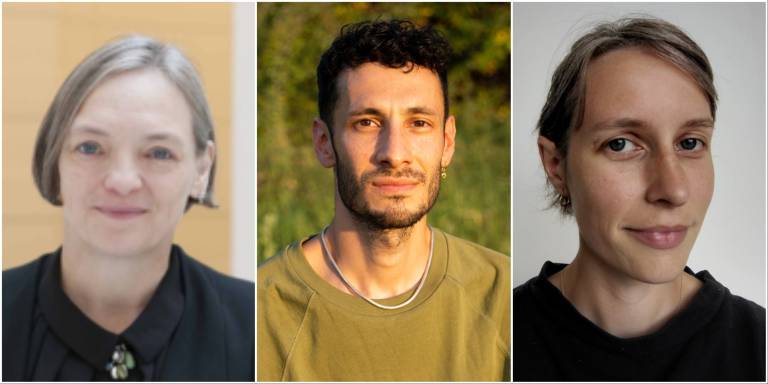
From left to right:
Pip Laurenson: Professor of Conservation, director of MSc Conservation of Contemporary Art and Media
Brian Castriota: Lecturer of MSc Conservation of Contemporary Art and Media, conservator of time-based media artworks and archaeological materials
Libby Ireland: Lecturer in Conservation of Contemporary Art and Media and a practicing sculpture and installation art conservator.
The first MSc Conservation of Contemporary Art and Media cohort have had a fantastic winter term. We have created a talented community of staff, students and future conservators here at UCL East.
Last term, we organised guest workshops from outstanding academics, specialists, and artists. We were incredibly grateful to host Sue Shepherd, a light-work artist with extraordinary expertise in the technologies involved in neon artworks and their conservation. Sue guided our students through what impacts the colour of the tubes, the different supports, how transformers have evolved, how neon artworks age and what we can do to document and care for them. Sue brought a fantastic array of examples to the UCL East Conservation Lab. The cohort was shown the different technologies and how to handle the various tubes and saw them light up. They came away with a greater understanding of caring for neon artworks and the skill involved in their creation.
We were also joined by the brilliant Dr Bronwyn Ormsby, Tate's Principal Conservation Scientist. She taught our students about recent developments in cleaning systems and used our test boards to compare various cleaning options, from dry cleaning with sponges and erasers to pH-adjusted waters and more sophisticated gels and microemulsions. Our students enjoyed getting a feel for the different materials and considering the environmental impacts of the various systems.
Our students were also introduced to various historical audiovisual media and technologies used by artists and the different forms their examination can take. Video engineer and preservation specialist Adrian Finn introduced our students to the basics of analogue video and the important things to consider when examining magnetic video tapes. They were thrilled to see the inner workings of a U-matic tape deck (part of a state-of-the-art equipment rack in our Media Conservation Studio) and the transport mechanism that winds the tape around the spinning tape heads.
Computer-based art conservator Dr Tom Ensom led a two-day workshop on disk imaging, and the students successfully imaged and emulated (for the first time!) some CD-ROM-based artworks from iniva.
We were also joined by Lynn Loo - a renowned filmmaker, artist, and film archivist at the BFI - who introduced the students to the basics of film and film preservation and gave us an insight into her own creative practice. She performed one of her dual projector 16mm artworks for us, and our students created, spliced together, and projected their own looped 16mm artwork.
Well done to our students - keep the energy up in the next term! We can't wait to see where your studies and careers go next.
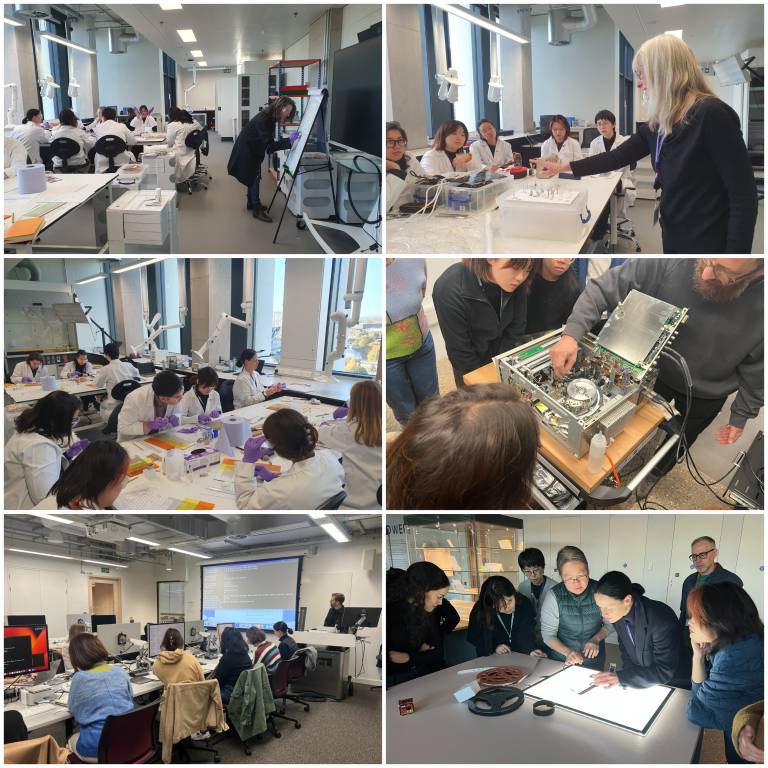
Interview with the History of Art Society President 2023-24
Izzie Harvey, Communications Manager, speaks to Yige Wang to find out about her student life and plans for the Society in 2024.
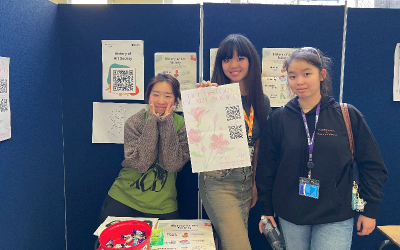
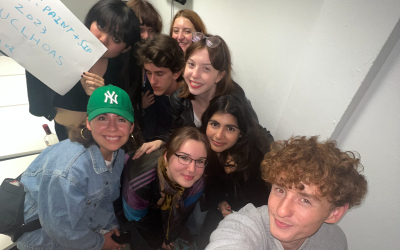
Izzie
Hi Yige! Thanks for doing this interview as the 2023/24 History of Art Society President. Please tell us a bit about you as a student.
Yige
Hi Izzie. Very happy to speak to you! I'm in my third and final year of BA History of Art. I'm studying German Art, 1450-1600: Renaissance and Reformation with Dr Allison Stielau, Art and Visual Culture in Early Modern England with Dr Rosemary Moore, and two philosophy modules. My dissertation is on Iconoclasm and the Reformation in the Netherlands, supervised by Dr Stielau.
Izzie
Your topics sound terrific. So why did you want to become Society President?
Yige
Simply put, I'm really interested in the history of art. I joined almost all the events and talks held last year by the Society. I also want to engage more people in the History of Art as it's still a niche subject few know much about. Many students and lecturers from other departments have joined events this year, which is very encouraging!
Izzie
Fantastic - that's excellent outreach. Did you have any similar experience before this role?
Yige
Not in a leadership role, but I was briefly working as a teaching assistant in an Art Studio. I helped students with their Fine Art portfolios by supporting them in getting inspiration from historical works by different authors, curators, and artists.
Izzie
What events have you held this year, and what have you got coming up?
Yige
We held a successful events programme in Freshers' Week, including a picnic and pub socials with high turnouts. We also had a charity book sale, raising over £120. One of our most popular events was our 'Paint and Sip' session; we provided drinks, snacks, and art materials to create artwork together. The event was attended within and outside the department, and we'll hold more soon.
We also visited the Courtauld Gallery, where Dr Stielau gave a wonderful exhibition talk. We plan to do an exhibition review of 'The Cult of Beauty' at the Wellcome Collection. I'll arrange a medieval art talk with Dr Jess Bailey in 2024. Finally, we're just about to have our Winter Social, which all the students are excited about.
Izzie
What an events programme! I'd heard how popular the 'Paint and Sip' sessions were! So, what's next for you?
Yige
I'll apply for a Master's in History of Art or Philosophy, and then I want to continue to PhD study and work in academia.
Izzie
Lots of hard work to come. Lighter touch, then... what's your favourite book?
Yige
My favourite book is John Calvin's Institutes of the Christian Religion. My special interests are in theology and religion. The book will play a significant role in my dissertation as I'm researching the relationship between Christian theology and visual art or imagery. It's provocative and inspiring to think about how art played a critical role in the religious context and how it was destroyed and removed from the church.
Izzie
That sounds fascinating. Good luck with your dissertation. Where are your favourite places to visit and eat in London?
Yige
My favourite place to visit is The National Gallery because I find Caravaggio's dramatic paintings fascinating, especially Salome with the Head of John the Baptist (pictured). I wrote my first essay on this artwork! The Gallery also hosts 'Friday Lates', 9PM close and free entry - perfect for night owl students!
In terms of food, I really like Cay Tre, an affordable and authentic Vietnamese restaurant. And you can't beat a Filet-O-Fish from McDonald's when the student loan is running low.
Izzie
Yum, I'll add Cay Tre to the list! Last question: what has been the highlight of your UCL experience so far?
Yige
I received the Francis Stracey prize for the second-highest academic performance in the First Year with a £50 prize - it helped me believe that I'm meant to be here and that academia is for me. Obviously, I'm also going to say being the President of the History of Art Society this year is the best, and I'm looking forward to leading in 2024!
Izzie
Thanks so much for your time, Yige. You're doing an excellent job! Can't wait to hear what you do next.
Yige
Thank you!
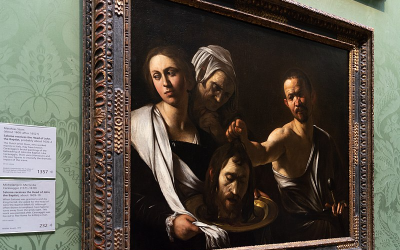
LGBT+ History Month: Teaching Queer and LGBT+ History in Schools
Bob Mills
Professor of Medieval Studies
Head of History of Art Department
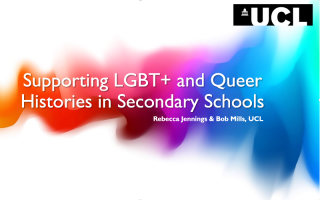
Since January 2023, I've been working with a colleague in the History Department at UCL, Dr Rebecca Jennings, on a pilot project to support the teaching of queer and LGBT+ history in secondary schools. This draws on our longstanding research interests – mine on the visual culture of sexuality and gender in medieval Europe and Rebecca's on post-war British and Australian lesbian history.
The project also builds on previous work I've done to develop a queer approach to museum collections and cultural heritage, as well as activities such as the queer-themed walking tour of UCL and Bloomsbury that I developed a few years back to foster a sense of community among LGBT+ staff, students and our alumni at our university specifically. You can read more about some of these interests in my staff journey, where I describe my route to both art history and queer studies.
The main aim of our current project is to support and facilitate the teaching of LGBT+ and queer topics as part of the broader history curriculum. Rebecca and I are primarily motivated by introducing young people to the kinds of histories and approaches we never encountered ourselves at school in the 1980s and early 1990s.
Section 28 of the Local Government Act, which became law in 1988, prohibited what it called the 'promotion of homosexuality' as a 'pretended family relationship' in British schools and other local authority-funded services, which restricted what could be taught. Since the repeal of Section 28 in 2003, there have been some positive developments, including the launch of the now widely celebrated LGBT+ History Month in 2005. But with pressures to 'teach to the test' and limited time to source suitable case studies or to develop confidence in queer methodologies, teachers have told us that they'd really benefit from some additional guidance and resources.
Initially, Rebecca and I decided to focus our energies on secondary schools, particularly emphasising the history being taught to 11–16-year-olds. As a first step, we held several workshops in the spring and summer with an energetic bunch of around 35 history teachers, mainly based in London and the southeast, as well as several academics with expertise in different periods of queer and LGBT+ history. Our final workshop was held in June at the Museum of London.
The workshops were highly generative, and on the back of them, we created some sample teaching packs that were rolled out publicly in the autumn. These include slides, selected sources (both visual and verbal), lesson plans and guidance. The teaching packs were launched in October and are freely available via our project web page. If the packs are well received, we hope additional funding might be available to scale the project up nationally and to develop additional resources.
This is just one of the many public engagement and knowledge exchange activities that colleagues in UCL History of Art have engaged with in recent years. You can learn more about the other initiatives on the Department's website.
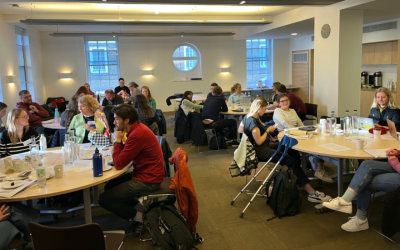
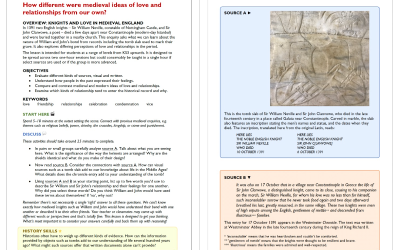
Leverhulme Success
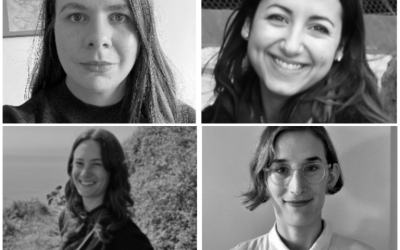
Kimberly Schreiber, UCL History of Art lecturer, explores the relationship between photography and the emergence of the broken windows theory of policing in the United States.
Moran Sheleg analyses Saul Steinberg's work, positioning his art as a material form of theory that has far-reaching consequences for the conceptualisation of modernism.
Marta Zboralska maps responses to Polish writer Witold Gombrowicz in visual art, using object-centred art-historical methodologies to study how Gombrowicz’s prose has been transformed into a variety of materials and mediums, traversing geographical contexts
Chloë Julius explores the critique of American art after the 1960s through the intellectual contribution of art historian, critic and curator Barbara Rose, picking up this forgotten but crucial strain of the historiography of American art.
Read more about their projects.
My Journey as an Art Historian – Dr Cadence Kinsey
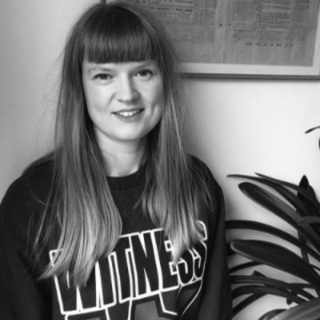
I have been with the History of Art Department at UCL since 2003, completing my BA, MA, and PhD here, before joining as a permanent member of academic staff in 2019. This probably makes it sound as though all along I had a plan, some determination to become an art historian that kept me going through thick and thin, but the truth is that I came to History of Art purely by accident. Originally enrolled on another degree programme, I happened to sneak into a lecture being given by someone who I am now incredibly proud to be able to call my colleague. By the end of the lecture, I was totally sold on the complexities and challenges of the discipline.
Although historically the discipline might have recruited narrowly, it does not mean that there is anything inherently elite or elitist about History of Art. In fact, how it teaches us to think about the world feels increasingly relevant to all, and it is a highly desirable subject for entry into the creative industries, which account for 1 in 11 jobs in the UK according to the latest figures (correct in 2023) from the Department for Digital, Culture, Media & Sport.
In my role at UCL I have therefore been working to expand access to studying the subject for all, cutting the entry requirements so that prospective students who meet certain criteria can come to UCL with grades BCC at A-Level. In 2022 only eight state schools offered History of Art as an A-Level. I also hope to find ways to better support our under-represented student groups once they are here and to ensure that they are able to progress, should they wish, on to further degrees.
Class is not recognised as a protected characteristic here in the UK, yet it can have profound consequences: from life expectancy to the expectations for our lives that we are (or are not) encouraged to have. As my own experience bears out, this is felt acutely in education: affecting everything from where we will study to what. After two decades of trying to fit in with art history and academia, I am perhaps now starting to make art history and academia fit in a little more with me.
It is not easy to put a positive spin on how difficult the journey to securing a permanent academic post has been. At every step there have been enormous financial, social, and academic demands, from balancing work alongside study, to assimilating and fitting in, to having to excel to secure scholarships for further study (as opposed to simply being ‘good enough’). I am acutely aware that for others, particularly for those who additionally experience racialisation and racism, the process is even harder.
I hope that this can offer some representation and recognition for the extraordinary achievements of thousands of students across the UK who continue to strike out along this path every year, despite the odds. Maybe you are one of those reading this now. For anyone else, please read this.
Spotlight on Clemency Wood
BA History of Art, 2020
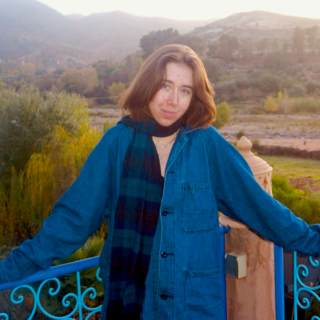
After graduating from the MPhil programme in 2022, I received a fully-funded scholarship to continue to a PhD at Cambridge, supervised by Tabitha Millet. I am deeply excited by my PhD project, which is currently underway and uses Critical Arts-Based Research and ethnographic methods to investigate how young people engage with art and how school Art education might be reformed.
Central to the PhD research is a belief that Art education can and should be enjoyable and beneficial to wellbeing. This belief is undoubtedly influenced by the fact that I immensely enjoyed my History of Art BA programme at UCL and valued the autonomy it gave me.
I am contactable by email at cw791@cam.ac.uk. You can also learn more about me on my website.
Spotlight on Lydia Figes
BA History of Art, 2015
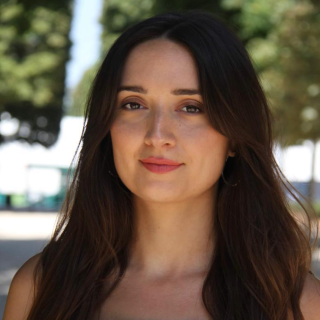
I graduated from UCL in 2015, where I focused on gender and postcolonial studies. The following year, I began a Master’s degree on an academic scholarship at the Courtauld Institute of Art. During that time, I spent six months working with the Barbican curatorial department, assisting with the exhibition ‘Strange & Familiar: Britain As Revealed by International Photographers’ curated by Martin Parr.
Shortly after completing my postgraduate degree in 2016, I began working in commercial galleries, including Lisson Gallery, in the editorial department. In the following years, I moved into freelance arts journalism, working briefly on the Art News Daily desk for Apollo Magazine. In 2018, I joined the charity and digitisation project Art UK, becoming Content Editor in 2019.
Since my studies, I have written for numerous art magazines and platforms, including the Guardian, Apollo, Elephant, Dazed, AnOther, i-D, TANK and The British Journal of Photography. I have also contributed to numerous Phaidon publications, including The Great Women Painters and Artifacts: Fascinating Facts about Art, Artists, and the Art World.
I am now studying for a part-time MPhil/PhD with Emma Wilson at Cambridge University. My first book will be released by Thames & Hudson in 2025.
Get Involved
We always want to hear about your exciting projects and careers as UCL History of Art alumni. If you would like to be more involved with us, including in our news or events, please contact Izzie Harvey, Communications and Events Manager.
Stay updated with our department - we hope to see you again soon.
 Close
Close

